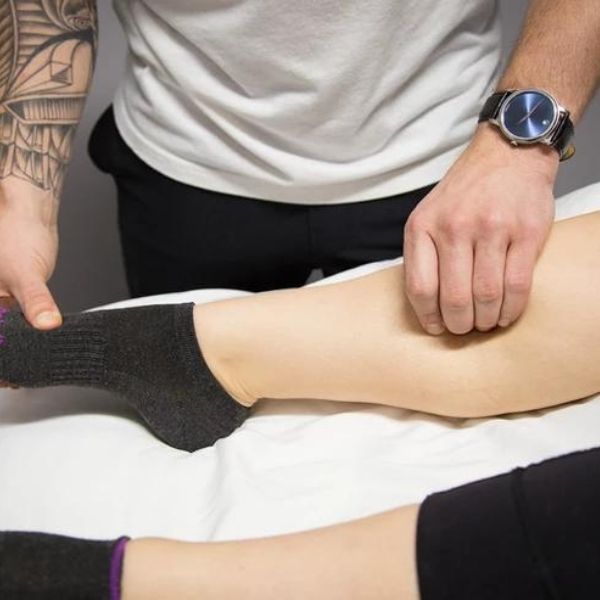If you are a runner, play a sport that involves a lot of running (basketball, soccer, lacrosse, etc.) or maybe you are on your feet all day at work and are constantly walking place to place (nurses, construction workers, etc.) you may have experienced shin splints. If you have ever had them, you know that shin splints can be very painful and can prevent you from performing your best. So what exactly are shin splints, how do you know if you have them and how do you get rid of them?
When you are experiencing shin splints, you will have pain in your shin. The pain is usually located on the side of your tibia, or your shin bone. The pain is caused by the muscle (tibialis anterior) pulling away from the bone causing a microfracture of the bone. When this is left untreated with continual training you could experience a stress fracture in your tibia.
What causes this to happen? Well, there are several reasons and the answer is usually a combination of several, just like most injuries you experience. There could be a biomechanical component to the injury. This could range from the lack of full motion in a joint in your body (hips, knees, ankle, foot) to improper form while running or walking (an alteration in your gait). There is also a possibility of muscle imbalance in your lower leg. If your calf muscles are tight, this could cause the muscles in the front of your leg to be weak. When this is the case, the impact from running or walking is not absorbed throughout the leg evenly and can lead to injury. Old and worn shoes can also cause absorption of impact to be altered leading to potential shin splints.
Knowing potential causes of the injury allows the treatment method to be determined. Loosening up the muscles in the calf with stretches and strengthening the muscles in the front of the leg with a variety of exercises is a great place to start. Taking a closer look at the way someone walks or runs and making small corrections could lead to a huge impact. Something as simple as buying a new pair of shoes with good support and cushioning could be enough to help you. Also, seeing your chiropractor to correct the restricted joints in your legs can help your shin splints heal.
As always, keeping up with your exercises even after you are no longer in pain can help prevent the injury from returning. Call the office today and schedule an appointment with Dr. Caitlin to learn more about these exercises if shin splints are preventing you from performing your best!





